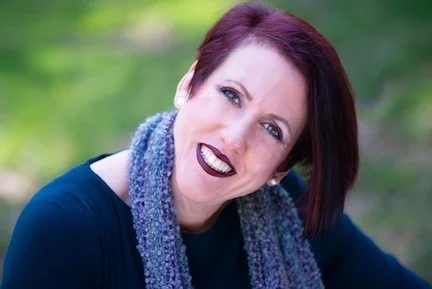Late Diagnosis of Autism Spectrum Disorder (ASD) in Girls and Women
The Centers for Disease Control and Prevention (CDC) estimate that on 1 in 59 children have a diagnosis of Autism Spectrum Disorder. They also estimate that boys are four times more likely to have a diagnosis than girls. Are there less female children experiencing the symptoms of ASD or are they just going undiagnosed or in some cases, or being diagnosed with other mental health issues instead? Some of these additional mental health issues include generalized anxiety disorder, social anxiety disorder, depression, eating disorders, learning disabilities, attention deficit disorder, Tourette’s Syndrom, and obsessive-compulsive disorder. Likewise, if Autism Spectrum Disorder is thought by many in the community to be more of a problem among males, could it be possible that female children and young adults go undiagnosed because the criterion often looked at for diagnosis is based on research done on males? This was a common theme I found when I researched the matter.
First, let’s look at some of the symptoms of a person experiencing Autism. Autism Spectrum Disorder includes both autism with severely compromised communication and social abilities to milder forms, previously known as Asperger’s Syndrome. The milder forms include social and communication challenges, such as poor or fleeting eye contact, difficulty with tolerance around sensory exposure (such as experiencing sounds as too loud, becoming easily frustrated with clothing textures, resistance to having hair brushed or teeth brushed, craving or avoiding certain types of movement to name a few), and difficulty maintaining and navigating social relationships. In addition, those on the spectrum often enjoy knowing about specific interests and can often retain a great deal of information to memory around these interests (sports statistics, specific periods in history, mechanical or computer technology, art, trains, classic cars, airplanes, gaming, etc.). Coping with the constant sensory bombardment, strong feelings, and navigating the often difficult social and communication challenges often leaves children and young adults feeling anxious in their everyday lives of home and school and many children become targets for bullying by other children, thus intensifying feelings of sadness, frustration, and anxiety. As a result, the person with Autism sometimes uses self-stimulatory repetitive behaviors to cope with this constant bombardment of sensory experiences, managing of feelings, and social/communication challenges as a way to self-soothe. What does self-stimulatory behavior, often referred to in the community as “stimming,” look like? It can be finger flicking, repetitive pencil tapping or tapping/rubbing on the body, cracking knuckles, rocking, arm flapping, pacing (sometimes on tip toes), repeating words/phrases, smelling objects or people, jumping/bouncing/twirling repetitively to name just a few. It can also include behavior that is considered self-injurious or aggressive towards others, such as pinching, biting, skin picking, punching and the like.
Now that we have an idea of what Autism looks like, what are some of the possible reasons behind late diagnosis of girls, young adults, and women? Some of the possible reasons outlined in research include girls present with less obvious symptoms in early childhood, they learn to mask stimming and other symptoms that make them stand out during the school day or when with other children, and they find creative ways to manage their symptoms by mimicking their same age peers who are not on the spectrum. They are more likely to engage with other children on the playground and to participate in social interaction with other same age children until they reach late childhood/early teens. When girls reach adolescence, the pressure for developing and managing friendships and romantic crushes/relationships often intensifies. Also, many fall at risk for bullying and find it hard to work through rejection and managing problems within their relationships during these years. Building friendships is hard for most teens, but for girls on the spectrum, it can be even more difficult to find peers who are open and accepting of them. Given these experiences, it is not uncommon for girls to be treated for anxiety, social anxiety, and depression. Anxiety and depression are not symptoms of Autism Spectrum Disorder, but rather other existing conditions that commonly occur with it. These co-occurring struggles are often what leads a parent to seek therapy or medical treatment for their child. It is not unusual for them to be diagnosed with the co-occurring mental health issues, but not Autism. Some of the reasons for this are the clinical description in the DSM V that clinicians and psychiatrists use, lists the criterion for Autism Spectrum Disorder base on the research conducted on males.
Let’s take a look at what Autism Spectrum Disorder might look like in girls:
1) She often relies on other children to guide or speak for her.
2) She is passionate about specific, restricted interests.
3) She has unusual sensitivity to everyday sensory experiences.
4) Her conversations may be restricted to specific limited topics of interest and may not allow for her peers to engage in conversation with her.
5) She has difficulty with managing feelings when frustrated, sad, angry, or disappointed.
6) She often experiences depression, moodiness, and anxiety.
7) She has difficulty making and keeping friends or may seek out friends on line where the social nuances are lessened for body language.
8) She is often described as shy or quiet.
9) She can be passive.
10) The difficulty with social and communication challenges increases with age.
11) She may experience seizures.
12) She may struggle with knowing how to take turns during a conversation.
13) She may have difficulty “reading” social cues.
14) She may use speech in unusual ways, such as speaking in monotone or with an accent or she may talk using very formal speech.
15) She may struggle with how long to hold eye contact (either by having her eyes dart away or by holding eye contact longer than might be comfortable for her peers).
Now that you have an idea of what Autism Spectrum Disorder could look like for teen girls, young adults, and women, how do you go about getting a diagnosis? You can reach out to a pediatrician or child psychiatrist who has additional knowledge around ASD and ask to have an assessment completed. If school age, your child can be assessed by a speech and language therapist for the social language concerns (they call this the pragmatic use of language) and a school psychologist who can provide different rating scales that can be filled out. If you live in California, you may access the regional center in your location for evaluation as well for more severe forms of ASD.
Once diagnosed with ASD, there are options for social skills development groups as well as individual therapy to assist in coping with the co-occurring conditions, such as anxiety, social anxiety, and depression. Speech therapy can assist with helping her to better acclimate to social situations and the nuances of both verbal and non-verbal body language, which are often confusing to her. Occupational therapy can help with management of overwhelming sensory experiences and can help target areas of need. These sensory challenges present differently in different people and part of the assessment with the occupational therapist can help in this regard. If there is a co-occurring learning disability or her needs rise to the level of needing additional emotional support in school, a parent can seek out testing through the Individual Education Plan process to access special education services. Lastly, if medical treatment is needed to help with anxiety or depression, a referral to a psychiatrist can be made. A psychiatrist is a medical doctor who specializes in medications for mental health disorders. Getting a diagnosis is more than just finding a label to explain what is happening. It can help girls on the spectrum to get support earlier and hopefully, reduce some of the symptoms they may experience from co-occurring issues.
McGuire, Wendy, MSW, RSW, Ph.D, “The Struggles of a Teenage Girl with a Late Autism Diagnosis,” Autism Parenting Magazine, February 17, 2022. (https://www.autismparentingmagazine.com/struggles-teenage-girl-autism-diagnosis/)
Rudy, Lisa Jo, “Symptoms of Autism in Girls,” Very Well Health, November 2, 2021. (https://www.verywellheatlh.com/signs-of-autism-in-girls-260304)
Breen, Audrey, “Adolescence Can Help Unlock Autism Diagnosis in Girls,” UVAToday, August 31, 2020. (https://news.virginia.edu/content/adolescence-can-help-unlock-autism-diagnnosis-girls)
Jack, Claire, Ph.D., “Women and Autism Checklist of Symptoms: Social Symptoms,” Psychology Today, June 18, 2020. (https://www.psychologytoday/com/us/blog/women-autism-spectrum-disorder-202006/women-and-autism-checklist-symptoms-social-symptoms)
“Autism in Girls: Symptoms and Diagnosis,” Medical News Today, June 26, 2019. (https://www.medicalnewstoday.com/articles/325574)
“Autism First Signs and Checklist for Teenagers,” The Spectrum, printed March 11, 2022. (Https://thespectrum.org.au/autism-diagnosis/checklist-teenagers/)
COLLEEN DUGGIN, LCSW
I enjoy partnering with you as begin taking steps toward healing and feeling better. I understand that making the choice to see a therapist may be difficult for you and my goal is to provide a safe and comforting environment for you to work through problems in your life.
I have spent time helping people who are experiencing social and emotional challenges related to being on the Autistic Spectrum as a result of my past work at Inland Regional Center and I know how difficult and challenging it is to have a child on this spectrum. I understand your fear of an unknown future for your child as well as the daily struggles such as attending school, making friends or meltdowns for no apparent reason. I understand your anguish and frustration for finding the proper help for you child. Call me and let’s begin the important work of supporting you and helping your child.
If you are a parent with a child who has issues with Attention Deficit Disorder with or without Hyperactivity, Obsessive Compulsive Disorder, and Tourette’s syndrome, I have vast experience and knowledge in these areas and will collaborate with you to develop a plan for working with your child, which may include questionnaires about parenting a child with special issues. I will dig in and work with you to find a workable behavioral structure that can help you, the parent and help your child manage the symptoms. I offer you, the stressed and worn out parent who loves their child deeply but are exhausted a safe place to talk and discuss the issues of importance to you. Additionally, we will work together to develop a self-care plan that will help you to reduce the symptoms and enhance coping skills. This is why I chose Saturday to work to be the most convenient day for most parents.
Please, call me today to set up an appointment, it would be my honor to help you restore control, peace and calmness back into your family. I am easy to to get a hold of email: therapyccs@gmail.com or you can text me to set up your appointment (951) 323-2182 or if you wish to speak to a staff member call our main reception @ 951-778-0230. No excuses to not have control of your life.

